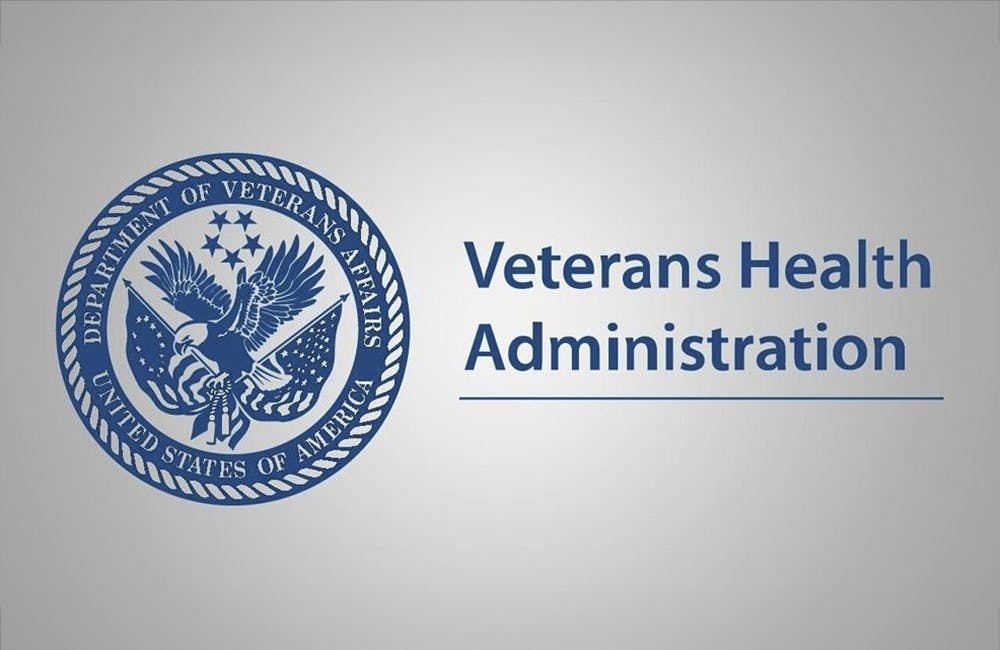VA Outlines Reorg, Data Reporting in COVID-19 Response Plan
The agency prioritizes telehealth and virtual care, plus frequent data communication.

The Department of Veterans Affairs has prepared an agency-wide plan to reorganize the Veterans Health Administration to best care for COVID-19 patients and contain the spread of the new virus.
“The primary goal of the operations plan is to protect veterans and staff from acquiring COVID-19 infection by leveraging technology, communications as well as using dedicated staff and space to care for COVID-19 patients,” Veterans Health Administration Executive in Charge Richard Stone wrote in the plan. “As the nation’s largest health care network, our transparency is foundational to provide the American health care delivery system the opportunity to leverage and contribute to how the medical community collaborates when faced with the significant challenges associated with global pandemic.”
The note touches on VA’s “fourth mission” to provide care to civilians in the event of hospital overflows during a time of crisis.
“VA stands ready to support the department’s ‘Fourth Mission’ to surge capabilities into civilian health care systems in the event those systems encounter capacity issues,” reads a declaration at the end of the plan. “Those requests would come from the Department of Health and Human Services.”
In abiding by its priorities, VHA is currently undergoing emergency reorganization to dedicate resources and human capital to care for COVID-19 patients while instating special precautions to ensure disease transmission is minimized both within and outside the VA.
The VA has outlined these preparations to be implemented along four distinct phases, spanning a preparatory phase of contingency planning and training, an immediate response period, a subsequent mobilization toward preparing alternate sites of care, and a final phase of recuperation and public assistance as the epidemic begins to wane.
“Similar to influenza,” the plan reads, “the event could last 18 months or longer and could include multiple waves of illness.”
The initial phase has been designed both in response to the current COVID-19 epidemic, as well in anticipation of future outbreaks of COVID-19 or similar viruses. Encompassing a wholesale planning and response contingency overseen by VHA leadership, this immediate phase of preparation involves training staff in both the care of COVID-19 patients as well as the practices necessary to ensure the disease is neither contracted or transmitted between VA health care providers. This is coupled with taking inventory of personal protective equipment (PPE) and medical devices while addressing deficits in crucial resources and forecasting potential areas of shortage.
The second phase involves a reorganization of VHA care facilities to accommodate and treat an influx of COVID-19 patients while ensuring the virus does not spread to patients seeking care for other critical health conditions. This phase will involve the wholesale redirection of the VA communications apparatus toward capturing the latest situational information across VHA facilities and reporting these daily findings to senior management. This will be coupled with the rallying of telehealth resources toward providing assistance to VA patients currently experiencing milder COVID-19 symptoms under home care.
As a final and crucial preparation, this second phase will involve the creation and management of separate COVID-19 wards in VHA facilities to handle emergency care while ensuring the virus does not transmit to non-COVID patients.
The third phase in the response plan will go into effect in case of patient overflow at either VHA facilities or non-VA health care networks due to sufficiently widespread transmission of the novel coronavirus. In the case that demand at VHA facilities escalates beyond capacity, the agency has prepared to locate and establish additional sites of care where COVID-19 patients in critical condition can receive essential triage. This will include both alternate buildings as well as mobile field hospitals. Similarly, if the rate of COVID-19 infection within local communities causes overflow at non-VA medical centers, the VHA is prepared to provide both clinic space of its own as well as field hospitals to assist with the broader public health response.
The fourth and concluding phase will begin as the epidemic is starting to wane. As demand for COVID-19 triage enters a decline, the VHA will begin to reallocate essential resources toward other areas of care while preparing for the potentiality of a resurgent epidemic. This will include the restocking of medical equipment, as well as allowing periods of rest for staff who worked overtime during the epidemic. This final phase will focus largely on fostering continuity of operations as VHA services are reorganized and essential staff take periods of leave, while taking stock of learnings from the prior epidemic to ensure the most effective response in the case widespread COVID-19 infection recurs.
One of the most consistent features of the plan is a rigorous demand for collection and dissemination of health information across the agency, both to direct its current actions as well as inform subsequent activity in the case of future epidemics. This statistical collection, tallied at the local level while being aggregated at the top for insights and analysis, will be centered on noting demands at specific hospitals for bed space and medical equipment. Data outlining deficiencies and gaps in the medical supply chain will be used to correct against these as the epidemic persists, as well as to ensure they are never repeated during future outbreaks.
Additionally, strain across the VHA infrastructure that is noted during the peak of the epidemic will be used to foster similar reinforcements in anticipation of future demand. In light of increasingly serious transmission projections in the U.S., the VA appears to be recognizing that patients may need to be redirected to newly established care centers and field hospitals — with the agency clearly devising the best means to mobilize these additional resources.
As a broader solution, the VA will need to develop accompanying IT resources to meet these informational demands and ensure statistical data is both aggregated and communicated thoroughly. With the agency moving to build out and develop a modernized, sophisticated health IT infrastructure, it is clear a serious component of this will now involve capacities for analyzing and preempting the most effective response to novel coronavirus.
This is a carousel with manually rotating slides. Use Next and Previous buttons to navigate or jump to a slide with the slide dots
-

IRS CX Efforts Come With a New Acquisition Office
The agency is using Inflation Reduction Act funds to transform the taxpayer experience through digital tools and technology.
3m read -

CDRH Director Jeff Shuren to Leave FDA
Michelle Tarver, deputy center director for transformation, will become acting director of the Center for Devices and Radiological Health.
1m read -

How Health Care Leaders Should Plan for Building Cyber Resiliency
Policy leaders recommend health care organizations implement tools like encryption and multi-factor authentication to protect their data.
4m read -

HHS Aligns AI, Tech Strategy Under its Policy Agency
ONC will have a new name and oversee more c-suites to better shape the future of health care technology policy.
3m read








